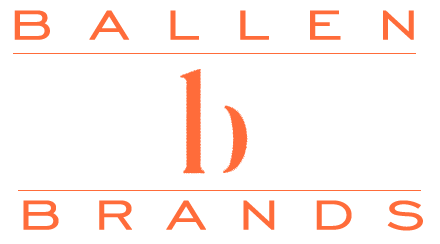Many real estate agents and Realtors® are struggling to make their business grow. They want more clients, but they don’t know how to get them. The best way is by having a high-quality real estate website design that will turn your website into a powerful resource to generate leads for the long run. Here’s a guide to get you started.
What is a Real Estate Website?
A real estate website is what an agent or Realtor® uses online as their digital business card, lead generator, and lead nurturer to create a steady stream of potential buyers and sellers.
These real estate website designs usually include a welcome message on the home page, an about us page or agent bio, a contact us page, and its three most important elements: properties, a blog, and lead generation tools like home mortgage calculators, home valuations, and market reports.
A full-fledged real estate website is not the same as a single property micro-website or a landing page, both of which are designed as add-on marketing campaigns and not a replacement for a stocked website capable of attracting and nurturing leads.
Defining the Goals of Your Website
Before you begin to design your real estate website, you’ll need to outline your website goals. Of course, the big-picture answer is to get more leads. But for success, you’ll have to dig down into the specifics. Your website can:
- Raise brand awareness: Lead your reader through an introduction, spark their interest, help them make the decision to choose you, and then take action by reaching out to you. Your website’s blog can accomplish this goal for you, provided you have a well-thought-out marketing strategy and the funds to invest.
- Grow Website Traffic: Be specific. How many new website visitors are you trying to gain? What’s the goal for attracting repeat visitors? What’s your bounce rate, and how can you lower it?
- Gain Search Engine Authority: How are you currently ranking, and what is your marker for success?
- Generate more leads: In one month, how many new leads should your website capture? How many people do you need to give you their email address or contact you for more information?
- Help you close more sales: When you offer potential home buyers and sellers valuable content on a professionally designed real estate website, you provide them with everything they need to build trust in you as an expert, learn from you through your blog posts, and rely on you when they’re ready to list or purchase.
To determine your goals and your course of action, ask yourself these questions:
- What is the purpose of my site?
- Who am I trying to attract as an audience?
- What do they care about, and why should they trust me?
- How will people find my content online if it isn’t shared through social media platforms like Twitter or Facebook?
- Why would someone subscribe to receive updates from me via email instead of opting in by filling out a web form on the home page of my new website?
- Is this strategy going to work within whatever budget we have available now, and what steps can we take over time, so our investment pays off?
Your website goals will change over time (so will your marketing budget), so you’ll create several marketing campaigns as your business grows. This will be an ongoing process of evaluating, resetting goals, and reaching new heights.
Static vs. Dynamic Website
In the past, when you wanted a real estate website design, your only option was to hire a web designer and have them build one for you. This is called a “static” or “flat” real estate website because it’s just one single page that looks exactly the same no matter how many times people visit it.
It has its benefits: simple, easy to manage since there aren’t multiple pages of content on your site requiring updates every time something changes, and fast loading speeds so users can get in and out quickly, which helps improve Google rankings.
However, this type of real estate website design does not allow search engines like Google to crawl through all your essential information about communities, amenities, how-to articles, and homes for sale in your service area.
On the other hand, a dynamic website features a site that’s fully stocked with several pages of content and a bottomless blog. This means there are more opportunities for search engines to crawl your site, which leads to higher rankings and better website recognition.
Dynamic real estate websites also have their downsides: they’re slightly harder to build since the web designer needs extensive knowledge about coding in HTML, CSS, PHP, MySQL, among other tools; users need good internet connection speeds, or else the pages will take too long to load on their end; and because these sites require constant upkeep by adding new blog posts regularly – it takes time away from closing deals.
Most real estate agents opt for a dynamic web design because it has more flexibility and is easier to update on the spot.
Choosing the Right Platform, Domain Name, and Hosting
The next step in designing your real estate website is to choose which website platform you want to use. For example, some brokerages offer agents an in-house website, such as the Keller Williams KW Command websites. The problem with these is that they’re extremely limited in design, and you don’t own your content, which means that if you leave the brokerage, you also have to leave your website and all of its content behind.
The most popular website builder for real estate agents is WordPress. You can hire a real estate website development company to set up your website’s foundation and core elements and then take over the wheel to manage your own blog posts and website updates.
Another advantage to using WordPress is that you can incorporate the use of themes and plugins to vamp up your site with all the bells and whistles. For the purpose of this article, we’ll use WordPress as the platform on which to design your real estate website.
Your next step is to choose your domain name, which is often your name followed by .com. With your website platform and domain name registered, you’ll select web hosting, which is usually offered by the company that designs your website’s foundation.
Choosing the Right WordPress Theme
Choosing a WordPress theme isn’t easy because there are literally thousands of them, from free to expensive, with many of them designed for specific industries, such as real estate.
Your theme should be lightweight, compatible with Elementor or Gutenberg Blocks, mobile-friendly, and responsive. It should be compatible with different browsers, search engine optimized, and customizable. Your theme should also support plugins. Before selecting a theme, check to see when they offered their last update, how good their support team is, and how they’ve been rated and reviewed on social networks.
To install a WordPress theme:
- Download it to your computer.
- Log in to the admin area of WordPress.
- Click “appearance”, then select the themes page.
- Look for the “Add themes” icon, which you’ll click to upload your theme.
It’s rather critical that you take your time in choosing a theme because once you’ve installed one, it’s advised that you do not switch. Switching themes could result in messed-up formatting, broken images, and 404 error pages. Pick your theme, and then stick with it.
Ten of the most popular WordPress themes for real estate website design include:
- WP Residence
- Astra
- Houzes
- Real Estate Lite
- CitiLights
- Divi RealEstate
- Real Spaces
- WP Pro Real Estate 7
- Homeland
- HomePress
Designing Your Website for User Experience
Your real estate website’s design needs to be simple, with an approachable color scheme. It should have a clean layout that doesn’t make users feel overwhelmed or confused about how they navigate the site. A good rule of thumb is if your grandmother could use it without getting lost, then you’re on track.
The most important thing for your web page’s branding and heading is consistency: every image and piece of content in the header should convey one message – Who you are, the service you’re offering, and the benefit to the client.
Everything else – fonts, colors, spacing between elements – are all changes that need to be consistent across pages, so visitors don’t get distracted by weird differences when scrolling from one section to the next.
Don’t go overboard with a gazillion fonts, colors, and graphics on one page either – it’s confusing for the viewer to read, and they’ll quickly get frustrated when trying to find what they’re looking for. Styles should be consistent throughout your site in order to create an appealing user experience that flows from beginning to end.
Your site also has to load quickly – more specifically, three seconds or less, so be careful how many chunky plugins you use; each one adds to load time.
WordPress Plugins for Real Estate Agents
Plugins are what takes your WordPress site to the next level. They’re activated on an as-needed basis and provide advanced features that can be added into sections of content throughout your website.
As you start using plugins for more tasks, they’ll require more memory from your web hosting account; if not appropriately configured by a developer, they may even crash your site, which is why it’s important to know how and when to use them.
Plugins can be used for a variety of tasks. They can improve SEO results by allowing you to add search engine optimized page titles and descriptions that are easily readable by the major search engines. They’re also good for optimizing images, so they’re smaller in file size and load faster, adding a contact form, and more.
There are over 50 different plugins that can be used for real estate websites. You can show properties, offer home value calculators, SEO, and make your site mobile-friendly – you’ll want to make sure the ones you choose will serve your needs, don’t slow down performance, or take up too much room in memory usage.
Here are some of the most popular real estate WordPress plugins:
- Estatik
- Easy Property Listings
- IMPress
- WP-Property
- Realtyna WPL Real Estate
- Essential Real Estate
- WP Amortization Calculator
- WP Real Estate
- WPCCasa
- Home Value WordPress Plugin
IDX Websites for Real Estate Agents
IDX is an acronym for Internet Data Display, a location where listings from the MLS are shared amongst agents, Realtors®, and brokers.
Many of the real estate themes offer some form of IDX, but for better results, you may choose to have a real estate website built for you that includes IDX with more features. Each has variations in how they can be customized for property display, lead magnets, and lead capture.
Here are some of the best IDX real estate websites for sale:
- BREW: Ballen Real Estate Websites
- IDX Broker’s Home™
- Showcase IDX
- iHomeFinder
- IDX Central
- BoomTown
- AgentFire
- Real Geeks
- Placester
- Agent Image
- AgentWebsite
Search Engine Optimization in the Framework of Your Website
SEO is an acronym for search engine optimization. It’s the process of allowing your web pages to be ranked higher in SERPs (search engine results). Ranking high allows more visitors to find you, so it’s important that each page has its own optimized title, meta description, and keyword tags if not using real estate WordPress themes with SEO built-in.
If you don’t have a web developer, there are several SEO plugins that you can use to help get your site on the road to better SERP rankings. These include:
WordPress SEO by Yoast: This is an essential plugin for real estate websites because it allows you to customize almost every element of each page without having to know HTML or CSS coding.
All in One SEO Pack: This is another great real estate WordPress plugin for optimizing all of your web pages, where you can easily change the page titles, descriptions, and more without knowing HTML/CSS. It even helps with canonicalization across sub-domains to ensure search engines know which pages are related on multiple domains within the same real estate website.
Both of these plugins allow you to set up titles and meta descriptions that encourage people to click through to your site; the better optimized your pages are, the higher they’ll rank in search engines like Google or Bing – which means more traffic for you!
Your Content
You’ll probably have an about us page, a contact us page, and a few of the basics, but what drives traffic to your website and boosts your search engine rankings, making you discoverable online, is your written content. You can enrich your site’s written content with high-quality photographs and YouTube videos to increase viewers’ time on your page.
When you publish blog post after blog post after blog post, you build up a library of reliable content that someone is likely searching for. Google has had a chance to index all of your blogs and can then determine if your blog is a good fit for that search query. If you had no blogs to index, your website could not be found online, no matter what a user searches for.
To establish yourself as an expert in your industry, to build up a library of blogs that have been indexed, and to grow your ranking in search engine results, you’ll need a plan for what content you’ll publish, when, where, and who is responsible for carrying out the associated tasks.
You’ll think through your content in advance, choosing to focus on your website goals. If your goal is to nurture existing leads, you could post articles about how to sell a house, how to stage a house, how to price a house, closing costs for sellers, closing costs for buyers, the basics of a home mortgage, steps to buying a house, etc.
If you include an offer called a lead magnet, a free gift that the viewer can download, you can capture their email address and add them to your database as a new lead.
You need a content marketing strategy as part of your real estate website design.
What is a Content Marketing Strategy?
Content marketing is the process of creating, sharing, and distributing relevant content to attract and nurture your ideal prospects for them to experience enough value that they become a lead.
A content strategy is the series of steps you’ll need to take for your website design and real estate marketing campaign or lead generation plan to be successful.
To develop a content marketing strategy for your real estate website, you’ll need to ask yourself these questions:
- Who are the ideal clients I want to attract?
- How will they find my site and blog posts?
- What can I do or create that would be valuable to them?
- Why should they trust me as an expert in this field of work?
- What free gifts can I offer them in exchange for their email address and contact information?
- How often will they visit my site, blog page, YouTube channel, etc.?
You can get an endless supply of ideas for content topics by writing down and keeping a list of every question your past and current clients ask about your business. You could do a little keyword research around that topic and use that as a jump-off point to write a long-form blog post. Each client question becomes a unique, stand-alone piece of evergreen content.
Evergreen content is writing that’s not dated by specific seasons, dates, or prices that are subject to change. Anything that out-dates a piece of writing means that the writing isn’t evergreen and will lose traction over time as its value expires.
Evergreen content will continue to grow in the search engine rankings over time, especially as it becomes more popular with readers.
Keyword Research as Part of Your Website’s Design
Your content marketing strategy is built in conjunction with your keyword strategy. A keyword strategy is a plan that allows you to find the right keywords, determine their monthly search volume and cost per click (CPC) in Google AdWords.
Keyword research is a key step when designing your real estate website because if it’s too difficult for people to find you on page one of Google or Bing, they won’t be able to see all the valuable content you have available!
The good news is there are plenty of free tools out there where anyone can enter a keyword term into a search bar and discover related phrases with high-volume traffic potential, including Google Keyword Planner and YouTube Trends.
You can also take advantage of a paid keyword research tool like SEMrush or Moz Keyword Explorer to help you identify what potential clients are searching for when looking online.
SEMrush is one of the best tools to use when you want to find keywords for your real estate website because it provides valuable information about how many people are searching online, monthly volume data, related keyword suggestions, and what ads show up on Google search.
When you’re ready to get started designing a new blog or content page, SEMrush will help you identify high-volume phrases that your prospects could be using right now in their own research process.
If you prefer other free tools, Google’s Keyword Planner (formerly known as the Google Keyword Tool) is another excellent option. There are plenty of other free tools to help you with your keyword research strategy, but these two options should give you everything that you need to get started!
Where to Get Content for Your Website
Even if you’re a skilled writer, your business roots are in real estate, and in those transactions is where your attention should be focused. The goal is to publish at least one article per week to keep the engine of your website churning. That can be a lot for one person to write. Plus, that person needs to understand how to incorporate keyword strategies and search engine optimization into their articles.
You can hire freelance writers to handle the job for you, but there are several content brokers that you can try, such as Contently, Crowd Content, Constant Content, and there are also digital marketing companies with in-house writers that specialize in crafting professional, high-quality writing tailored to your niche.
Do a Google search for “content marketing” to see all of the companies that will help you find content writers or blog contributors who want to write on your blog’s website!
You can also ask people in your network if they know any experienced real estate agents who would be interested in writing some guest posts every now and again. Keep track of their contact information, so you don’t lose touch with them over time!
Tracking and Measuring Your Website’s Success
Key metrics to look for when monitoring the health of your website include:
- Your website’s bounce rate is the percentage of people who visit your site and then leave without clicking on anything else. A high bounce rate can indicate that something about your page isn’t appealing to readers or might not be relevant enough for them to explore further. This will hurt your search engine rankings.
- “New website visitors” is an exciting number to watch because it’s a clear indicator that your digital marketing efforts through your real estate website design are paying off.
- Length of time on-site measures how long visitors stay once they arrive at a specific web page or blog post. This number should always be higher than average because it means you’ve done a good job in engaging them with fresh ideas and content in an easy-to-digest format!
- Repeat visitors indicate that the viewer found the website useful the first time and worth coming back for another look. This tells Google that your information is valuable.

Measuring social media growth along with blog post views will help provide a picture of how well your business is doing online from all angles, including real estate marketing trends related to social outreach, SEO, and web design.
Using tools like Google Analytics to see which blog posts are most popular, what keywords people use in search engines to find your business online, the number of website visitors you’re attracting over time, etc., will help you take real estate marketing ideas from theory into actionable strategies that work!
These metrics can provide valuable insight into how well your content is performing on social media platforms or within a specific category or keyword phrases for SEO purposes. If something isn’t generating results for you any longer, it’s probably time to replace it with new ideas!
When you find content that is performing well, analyze it to find out why. Was it:
- Title
- Topic
- Tone of voice
- Writing style
- length of the piece
- images or video
What was it about your best-performing pieces that propelled them to success? Find out and then emulate that.
A/B testing is a useful strategy for fine-tuning your approach and finding out what works best to engage website visitors.
For example, if you write a blog post about “real estate agent marketing tips” try it two different ways: one title could be “Real Estate Marketing Tips You Need Now!” while the other is more along the lines of “The Top 25 Real Estate Marketing Tips to Increase Your Income.”
See which one has a higher click-through rate, number of page views, bounce rate, time on site, etc. and use that approach when promoting your web content in future marketing efforts!
Take your worst-performing pieces and modify them to fit the standards established above. Then, republish them and promote them as new. See if they perform better the second time around.
Clicky.com is another resource for tracking website performance, which you can install on your site with a small snippet of code.
For an even more in-depth look at how users are engaging with your website, check out CrazyEgg.com, a heatmap that shows you where users are scrolling and stopping on your website and where they’re clicking.

Regular Website Maintenance
Your website is like a car; it needs to be well-maintained to stay fully optimal. That includes:
- Checking for broken links and making sure all of the resources you link out to work properly, including images that load without error messages within web pages or blog posts.
- Fixing any coding issues that might be preventing features from working correctly, such as broken contact forms, or if there are any 404 Error Messages displayed when people try to access a page that doesn’t exist on your website.
- Checking the overall design of the site and making sure everything is in working order after web updates have been made by developers. This includes font styles, images, page layouts, etc.
- Make sure your plugins are updated, working properly, and remove any plugins that you’re no longer using; it’ll free up space and improve site load speed.
Conclusion
Now that you have a better idea of what real estate web design is and what it can do for your business, it’s time to start thinking about creating your own website or having one built for you.
Your real estate website design should include all of the information that potential clients might want or need to know about your business, including contact information and a map showing exactly where you are located. And it should all be structured in a way that fully supports search engine optimization.
Your content should be thoughtfully planned in advance based on well-researched keyword data, published frequently, promoted, and then measured for results.
Update your website, plugins, and themes regularly to ensure that your real estate website continues to be a lead-generating machine by design.
And if all that sounds like a bit much to take on all on your own, consider calling in the professionals who are experienced in designing real estate agent websites and can handle everything from the set up to the hosting and the maintenance.
![The Ultimate Guide to WordPress Real Estate Website Design for Beginners [2021]](https://ballenbrands.com/wp-content/uploads/2021/10/the_ultimate_guide_to_wordpress_real_estate_website_design_for_beginners_ballenbrands.png)







